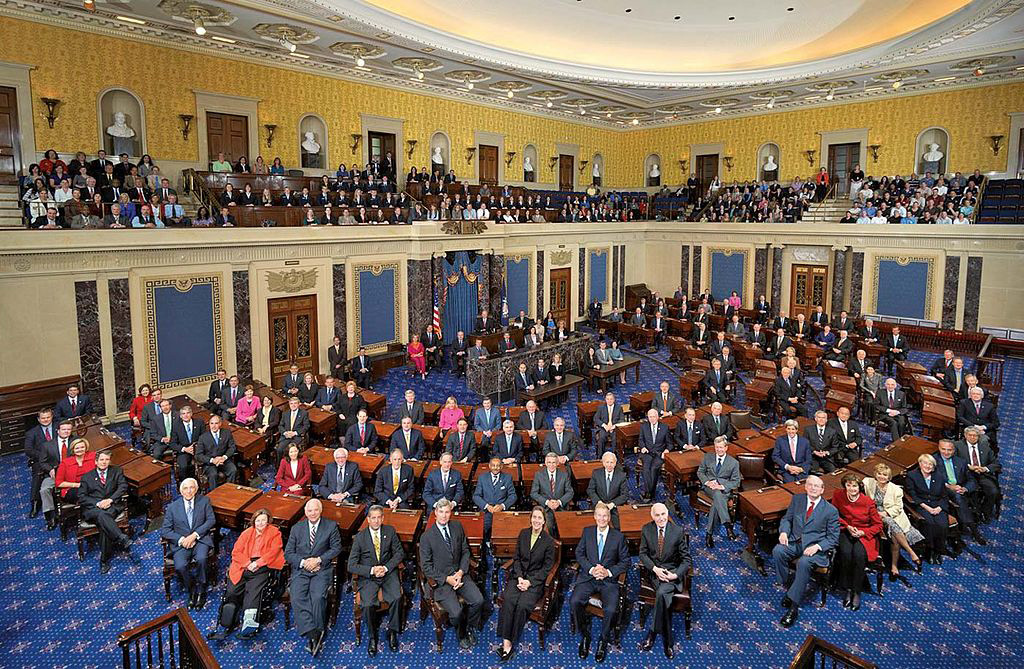
Members of Congress with the most extreme political views receive more attention from print media than political moderates, a new study suggests. Far-right Republicans get more coverage than far-left Democrats.
The issue: The public relies on news organizations for accurate, up-to-date information about federal policies and elected leaders’ positions on them. The way journalists cover Congress can shape the public’s perception and understanding of critical topics such as criminal sentencing, education reform and health insurance. Journalists have to make judgement calls about which facts, opinions and people to include in their coverage.
A new study looks at the political viewpoints and types of lawmakers who are most likely to be featured in newspaper articles and TV news segments.
An academic study worth reading: “Who Gets Covered? Ideological Extremity and News Coverage of Members of the U.S. Congress, 1993 to 2013,” published in Journalism & Mass Communication Quarterly, 2017.
About the study: Michael W. Wagner of the University of Wisconsin-Madison and Mike Gruszczynski of Austin Peay State University examine media coverage of members of Congress to see whether journalists give more attention to ideological extremists compared to moderates.
The authors look at how The New York Times covered lawmakers from the 103rd to the 112th Congress. They also look at broadcast coverage on the NBC Nightly News and CBS Evening News during the 112th Congress. In total, Wagner and Gruszczynski analyzed 242,030 print articles and 1,680 broadcast news segments.
Lawmakers were assigned scores to estimate their political ideology, with a score of -1 indicating the lawmaker expresses the most liberal views and a score of 1 indicating the lawmaker has the most conservative views. A score of 0 is considered moderate. For example, in the 113th Congress, Sen. Elizabeth Warren, a Democrat from Massachusetts, is assigned a score of −0.622 while Sen. Ted Cruz, a Republican from Texas, gets a score of 0.939.
Key takeaways:
- The Times gave members of the House with the most extreme views more than three times as much coverage as moderate members. House leaders and committee chairmen also were more likely to be mentioned. Female House members were included less often in news articles than male House members.
- The Times gave the most liberal and conservative senators more than twice the coverage of moderate senators. Being a Senate leader or heading a Senate committee did not appear to impact coverage. Female senators were more likely to be mentioned in news articles than male senators.
- The broadcast media also paid more attention to members of the House with more extreme views. But there was no difference in coverage by gender.
- NBC and CBS mentioned ideologically moderate senators and ideologically extreme senators at about the same rates. There was no difference in how much coverage they gave to male and female senators. Meanwhile, senators who headed legislative committees were mentioned less often than senators who did not. Senators who had served for multiple terms were more likely to be mentioned in broadcast news segments than less-experienced senators.
- Generally speaking, far-right Republicans received more coverage than far-left Democrats.
Other resources:
- A 2014 report from the Pew Research Center looks at how liberals and conservatives use different news sources.
- The 115th Congress serves from January 2017 to January 2019. Here are lists of members of the House and Senate.
Related research:
- A 2016 study published in Political Communication, “Does Media Coverage of Partisan Polarization Affect Political Attitudes?,” considers how newspapers shape people’s perceptions about how divided the country is.
- A 2015 study in the American Sociological Review, “A Paper Ceiling: Explaining the Persistent Underrepresentation of Women in Printed News,” finds that male names receive at least four times as much exposure as female names in major U.S. newspapers.
- A 2013 study in the American Political Science Review, “How Elite Partisan Polarization Affects Public Opinion Formation,” suggests “stark evidence that polarized environments fundamentally change how citizens make decisions.”
